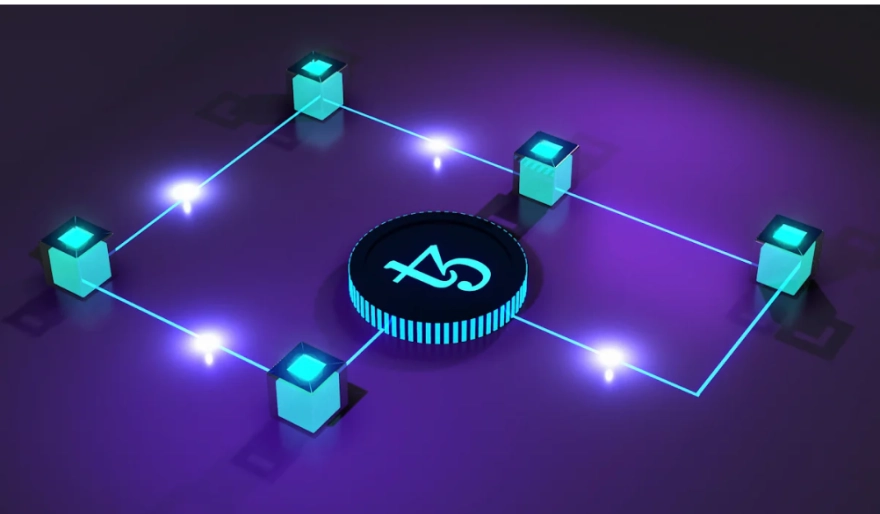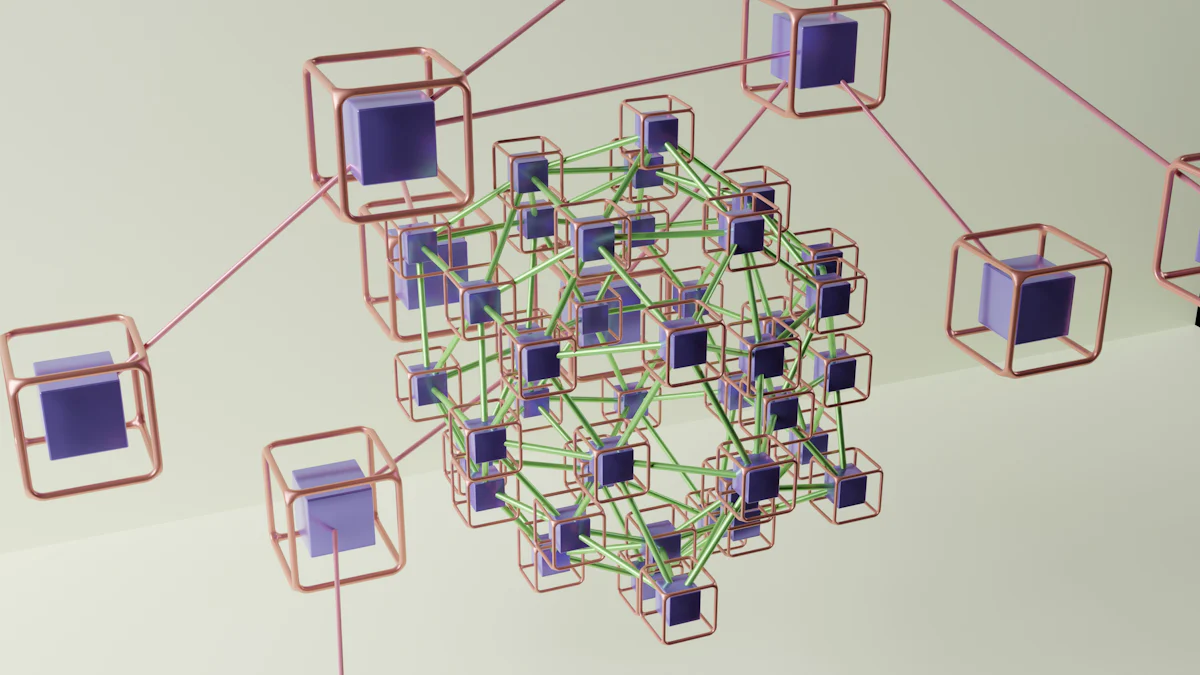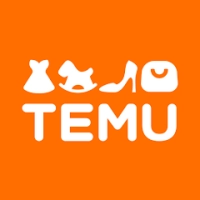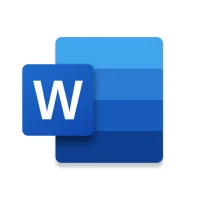the role of blockchain-based apps in security and transparency
40 min read Decentralization lies at the heart of blockchain technology. Unlike traditional systems that rely on a central authority, blockchain distributes data across multiple nodes. This structure enhances security and trust by removing single points of failure.written by Sophia Reynolds, Content Creator April 07, 2024 18:08
Image Source: pexels
You face increasing risks in today’s digital world, where data breaches and fraud are alarmingly common. For instance, the average cost of a data breach reached $4.88 million in 2024, and 88% of breaches stemmed from human error. Blockchain-based apps offer a solution by using decentralization and cryptographic security to protect your data. Unlike traditional systems, which rely on centralized control, blockchain distributes data across multiple nodes. This decentralized structure reduces vulnerabilities and ensures transparency through traceable, tamper-proof records. With these features, blockchain technology builds trust and enhances security in ways traditional systems cannot.
Key Takeaways
- Blockchain makes data safer by spreading it out and reducing risks.
- Public records in blockchain apps let people check transactions easily.
- This builds trust without needing middlemen to confirm things.
- Once data is added to the blockchain, it cannot be changed.
- This makes records trustworthy and safe from tampering.
- Smart contracts handle money tasks automatically, saving time and money.
- They also make things clear and build trust between people.
- Decentralized ID systems let you control your own information.
- This improves privacy and keeps your data safe online.
Key Features of Blockchain Technology
Decentralization and Its Impact
Decentralization lies at the heart of blockchain technology. Unlike traditional systems that rely on a central authority, blockchain distributes data across multiple nodes. This structure enhances security and trust by removing single points of failure. You gain control over your data permissions through smart contracts, ensuring privacy and security. Additionally, decentralization provides an auditable trail of transactions, allowing you to verify how your data is used.
Key principles of decentralization include:
- Transparency: The blockchain ledger is public, enabling anyone to view transactions and fostering trust.
- Immutability: Once recorded, transactions cannot be altered or deleted, ensuring data integrity.
- Distributed Consensus: All nodes must agree on transaction validity, achieved through mechanisms like Proof of Work or Proof of Stake.
By decentralizing data management, blockchain-based apps create a user-centric approach that prioritizes your security and trust.
Transparency Through Public Ledgers
Blockchain's transparency stems from its use of public ledgers. These ledgers allow anyone to view and verify transactions in real time. For example, Sweden's land registry uses blockchain to reduce fraud in real estate transactions. Similarly, Brazil employs blockchain for managing birth and death records, combating identity fraud.
Public ledgers ensure that all participants have access to the same information. This openness builds trust and accountability. You can track transactions and verify their authenticity without relying on intermediaries. Transparency in blockchain-based apps fosters a more open and trustworthy digital environment.
Immutability and Tamper-Proof Records
Immutability ensures that once data is added to the blockchain, it cannot be altered or erased. This feature guarantees the authenticity of records and enhances system reliability. Blockchain achieves this through several technical mechanisms:
- Each block contains a cryptographic hash of the previous block, linking them together.
- Altering data in one block requires recalculating the hash for that block and all subsequent blocks, which is computationally intensive.
- Copies of the blockchain are maintained across multiple nodes, making simultaneous changes across a majority of nodes nearly impossible.
Immutability offers significant benefits:
With tamper-proof records, blockchain-based apps provide a secure and reliable foundation for managing sensitive data.
How Blockchain-Based Apps Enhance Security and Transparency
Security Mechanisms in Blockchain-Based Apps
Cryptographic Encryption
How AI-powered Chatbots Are Transforming Customer Service Apps
Blockchain-based applications utilize cryptographic encryption to safeguard data and transactions. This technology employs sophisticated algorithms to prevent unauthorized access. A crucial component is public-key cryptography, which ensures that only the private key holder can authorize transactions. Additionally, hash functions generate unique digital fingerprints for each data entry, verifying integrity and preventing tampering. By leveraging cryptographic encryption, blockchain apps establish a strong security framework that protects sensitive information from potential threats.
Consensus Mechanisms
Consensus mechanisms are essential for maintaining the security of blockchain networks. They ensure that all participants agree on the validity of transactions. This agreement prevents fraud and double-spending. For example, Proof of Work (PoW) requires participants to solve complex mathematical problems to validate transactions. Proof of Stake (PoS), on the other hand, selects validators based on their stake in the network. These mechanisms coordinate nodes to verify transactions, creating a trustworthy and tamper-resistant system. By automating group verification, consensus mechanisms enhance the reliability of blockchain-based apps.
Transparency Mechanisms in Blockchain-Based Apps
Real-Time Data Sharing
Blockchain technology enables real-time data sharing, giving you access to the most current and accurate information. All transactions are visible to authorized participants, allowing you to audit and verify activities. This transparency reduces the risk of fraud and corruption. In supply chain management, for instance, you can track goods and confirm their authenticity. Real-time updates improve decision-making and operational efficiency, ensuring that blockchain-based apps foster a transparent and traceable system.
Audit Trails and Accountability
Blockchain-based apps create immutable audit trails that hold individuals and organizations accountable. Every transaction is recorded on a public ledger, making it easy for you to trace and verify actions. This openness discourages unethical behavior and promotes integrity. For example, governments can use blockchain to track public expenditures, allowing taxpayers to see how funds are spent. By providing tamper-proof records, blockchain-based apps build trust and confidence in digital systems.
Real-World Applications of Blockchain-Based Apps

Image Source: pexels
Finance and Banking
Fraud Prevention and Secure Transactions
You can rely on blockchain-based apps to prevent fraud and secure your financial transactions. These apps use immutable and transparent ledgers, ensuring that once data is recorded, it cannot be altered. This transparency makes it difficult for fraudsters to manipulate records. The decentralized nature of blockchain eliminates single points of failure, reducing vulnerabilities. Smart contracts automate transaction validation and trigger alerts for suspicious activities. Cryptographic measures further enhance data security, making unauthorized access nearly impossible. With real-time monitoring and auditing, you can quickly detect anomalies, ensuring a safer financial ecosystem.
Transparent Smart Contracts
Smart contracts revolutionize how you handle agreements in the financial sector. These self-executing contracts automate processes based on predefined conditions. For example, a loan repayment can automatically trigger fund transfers once the borrower meets the terms. This automation reduces paperwork and eliminates intermediaries, saving time and costs. Smart contracts also ensure transparency by documenting every step on a tamper-proof ledger. You can trust that the terms of the agreement will be executed exactly as written, fostering confidence in financial transactions.
Healthcare
Patient Data Security
Blockchain-based apps protect your sensitive medical information. Cryptographic encryption ensures that only authorized users can access your data. Decentralized storage reduces the risk of centralized data breaches, making it ideal for managing patient records. These apps also enhance trust by providing a transparent and secure way to share medical data across providers. You can feel confident knowing your information is safe from fraud and theft.
Transparent Medical Supply Chains
Blockchain improves transparency in medical supply chains. It tracks products from manufacturing to delivery, ensuring authenticity and quality. All stakeholders can view the complete transaction history of drugs or medical devices, promoting accountability.
This openness increases patient safety and faith in the healthcare system by enabling you to confirm the product’s authenticity and regulatory compliance.
Supply Chain Management
Tracking and Authenticating Goods
Blockchain-based apps provide accurate tracking of goods throughout the supply chain. They document ownership and locations, creating an unalterable audit trail. This is especially crucial for high-value or sensitive items. You can track products in real time, ensuring they reach their destination securely. The transparent record of every transaction minimizes fraud and enhances accountability.
Reducing Counterfeit Products
Counterfeit goods pose a significant challenge in supply chains. Blockchain addresses this issue by enabling manufacturers to issue digital certificates of authenticity. These certificates, stored on the blockchain, cannot be forged or altered. Retailers and consumers can easily verify product authenticity using a smartphone app. End-to-end visibility ensures that counterfeit products cannot infiltrate the supply chain, protecting both businesses and consumers.
Mobile Apps
Privacy-Focused Messaging Apps
Blockchain-based apps are transforming messaging platforms by prioritizing your privacy and security. Traditional messaging apps often store your data on centralized servers, making it vulnerable to breaches. Privacy-focused messaging apps built on blockchain eliminate this risk by decentralizing communication and using advanced encryption techniques. These apps ensure that only you and your intended recipient can access your messages.
Here are some notable privacy-focused messaging apps and their key features:
These apps empower you to communicate securely without worrying about third-party surveillance or data misuse. By leveraging blockchain technology, they provide a robust foundation for private and tamper-proof messaging.
Decentralized Identity Management
Decentralized identity management gives you complete control over your digital identity. Unlike traditional systems that rely on centralized databases, this approach uses blockchain to distribute data across a secure network. You manage your identity attributes directly, deciding who can access your information and when to revoke permissions.
Key benefits of decentralized identity management include:
- You own and control your digital identity without intermediaries.
- Blockchain ensures your identity data remains secure and immutable.
- Advanced cryptographic techniques protect your information from unauthorized access.
- Your identity is not stored in a central database, reducing the risk of breaches.
- You gain full transparency into how your data is used, fostering trust.
This system empowers you to safeguard your personal information while maintaining privacy. Blockchain-based apps make it possible to verify your identity securely without exposing sensitive details, enhancing both convenience and security.
Strategies for Implementing Blockchain-Based Apps
Choosing the Right Blockchain Platform
Public vs. Private Blockchains
When selecting a blockchain platform, you must decide between public and private blockchains. Public blockchains, like Bitcoin and Ethereum, offer high security through decentralized networks. They rely on multiple nodes to verify transactions, making them resistant to tampering. However, this decentralization can slow transaction speeds and increase costs during peak usage. Private blockchains, on the other hand, provide faster and more scalable solutions. They limit access to authorized participants, ensuring better control over data. While private blockchains sacrifice some transparency, they are ideal for businesses prioritizing efficiency and confidentiality.
Evaluating Scalability and Security
You should evaluate scalability and security when choosing a blockchain platform. Scalability ensures the platform can handle growing transaction volumes without performance issues. Security protects your data and transactions from unauthorized access. Consider the following factors:
- Scalability: Can the platform process transactions quickly as demand increases?
- Security: Does it use robust encryption and consensus mechanisms?
- Smart Contract Functionality: Does it support automated processes?
- Development Community: Is there an active community for support?
- Costs: Are transaction fees and development resources affordable?
By addressing these factors, you can select a platform that aligns with your app’s needs.
Balancing Decentralization and Scalability
Layer 2 Solutions
Layer 2 solutions improve scalability without compromising decentralization or security. These solutions operate on top of existing blockchains, offloading transactions to reduce congestion. For example, they bundle multiple transactions and validate them in bulk, increasing throughput and lowering fees. This approach ensures faster processing while maintaining the integrity of the main blockchain.
Hybrid Models
Hybrid models combine the strengths of public and private blockchains. You can use a public blockchain for transparency and a private one for sensitive data. This balance allows you to achieve scalability and security while maintaining control over critical information. Hybrid models are particularly useful for industries like finance and healthcare, where both openness and privacy are essential.
Ensuring Compliance and Security
Regulatory Considerations
Compliance with regulations is crucial for blockchain-based apps. You must address requirements like GDPR, which emphasizes data minimization and user consent. For financial apps, KYC (Know Your Customer) and AML (Anti-Money Laundering) regulations are essential. These measures prevent fraud and ensure legal compliance.
Integrating Encryption and Privacy Features
Encryption and privacy features protect user data. Techniques like AES and RSA encryption convert sensitive information into secure formats. Zero-knowledge proofs allow you to verify transactions without revealing details. Privacy-preserving decentralized apps (dApps) also enable secure transactions, safeguarding financial and personal data. By integrating these features, you can enhance user trust and meet compliance standards.
The Future of Blockchain-Based Apps in Security and Transparency
Emerging Trends
Integration with AI and IoT
The integration of blockchain with AI and IoT is shaping the future of technology. Blockchain enhances the reliability of data collected from IoT devices. This data becomes a foundation for AI to generate actionable insights and make intelligent decisions. For example, in smart cities, IoT sensors collect real-time data on traffic patterns. Blockchain secures this data, and AI uses it to optimize traffic flow, reducing congestion. This combination creates robust, transparent, and efficient systems.
However, challenges remain. AI models require access to blockchain-stored data, which can be limited. Real-time processing is also essential for AI to make effective decisions. Scalability constraints in blockchain technology can restrict AI performance. Addressing these issues will unlock the full potential of this integration.
Growth of Decentralized Finance (DeFi)
Decentralized Finance (DeFi) is revolutionizing the financial sector. It eliminates intermediaries, allowing you to access financial services directly. DeFi platforms use blockchain to provide secure, transparent, and tamper-proof transactions. For instance, you can lend or borrow funds through smart contracts without relying on banks. This reduces costs and increases efficiency.
DeFi also promotes financial inclusion. People without access to traditional banking can use DeFi apps to manage their finances. However, the rapid growth of DeFi raises concerns about security and regulation. Ensuring compliance and protecting users from fraud will be critical for its sustainable development.
Challenges and Opportunities
Overcoming Scalability Issues
Scalability remains a significant challenge for blockchain-based apps. High transaction volumes can slow down networks and increase costs. Layer 2 solutions, such as off-chain processing, offer a way to address this issue. These solutions bundle multiple transactions and validate them in bulk, improving speed and reducing fees. Hybrid models that combine public and private blockchains also enhance scalability while maintaining security.
Expanding Adoption Across Industries
Blockchain-based apps have vast potential across industries. In healthcare, they enable secure sharing of patient data, improving privacy and accuracy. In supply chain management, they enhance transparency and tracking, ensuring product authenticity. Governments can use blockchain for streamlined services like voting and public records. Despite these opportunities, adoption remains slow. Many organizations face financial constraints, lack skilled professionals, or struggle with interoperability issues. Overcoming these barriers will require collaboration and innovation.
Blockchain-based apps are poised to transform industries by addressing challenges and leveraging emerging trends. Their ability to enhance security and transparency makes them a cornerstone of future digital ecosystems.
Blockchain-based apps are reshaping how you think about security and transparency. By offering decentralized and tamper-proof systems, they provide solutions to challenges like fraud and data breaches. Their use in industries such as finance, healthcare, and supply chain management demonstrates their ability to solve real-world problems. As technology evolves, these apps will continue to drive innovation. They will help you build trust and create secure digital ecosystems, ensuring a more transparent future.
FAQ
What makes blockchain-based apps more secure than traditional systems?
Blockchain-based apps use decentralization, cryptographic encryption, and consensus mechanisms to protect your data. These features eliminate single points of failure, making it harder for hackers to breach the system. Immutable records ensure that no one can alter or delete data without detection.
How do blockchain-based apps ensure transparency?
Blockchain apps use public ledgers to record all transactions. You can view and verify these records in real time. This openness builds trust and accountability by allowing you to track activities without relying on intermediaries.
Can blockchain-based apps prevent fraud?
Yes, blockchain apps reduce fraud by creating tamper-proof records and automating processes with smart contracts. These features make it nearly impossible for fraudsters to manipulate data or transactions. Real-time monitoring also helps detect suspicious activities quickly.
Are blockchain-based apps suitable for small businesses?
Absolutely! Blockchain apps offer cost-effective solutions for small businesses. They improve security, streamline operations, and enhance transparency. For example, you can use them for secure payments, supply chain tracking, or managing customer data without needing expensive infrastructure.
What industries benefit the most from blockchain-based apps?
Finance, healthcare, and supply chain management benefit significantly. Blockchain improves transaction security, protects patient data, and ensures product authenticity. Other industries, like real estate and government services, also use blockchain to enhance transparency and efficiency.
User Comments (1)
"good site web"
younes ahmed
1 month ago
good site web



















